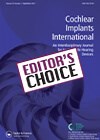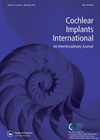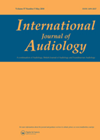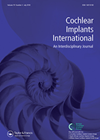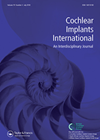
Journal Reviews
MRI scanning patients with cochlear implants and auditory brainstem implants
In the last five to six decades, MRI scanning has gone from physics experiments in Nottingham University through to Nobel prize-winning work by Sir Peter Mansfield and Paul Lauterbur, to a ‘routine’ imaging modality with an estimated 60 million MRI...
Electrocochleography and cochlear implants programming
Cochlear implants (CIs) often are the only option for people with severe to profound sensorineural hearing loss to be able to hear. Therefore, effective CI programming seems very important, especially in children who are still developing their speech. Using acoustic...
The paediatric dilemma of one ear in and one ear out of NICE criteria
The auditory implant team in Manchester have implanted a cohort of children where audiological thresholds meet the NICE guidance for cochlear implantation (CI) in one ear only, and the other falls into moderate, severe or sloping loss. These children are...
Tinnitus association with psychiatric and personality disorders
Tinnitus attracts large interest among researchers all over the world due to its negative psychological side-effects. This study aimed at investigating lifetime and current prevalence of psychiatric and personality disorders in patients with long-lasting and distressing tinnitus. Participants included 49...
Do the modern multiple microphones with beamforming facility really help implantees?
In this study the authors aimed to assess the benefit beamforming multiple microphones provide to implantees. Speech reception thresholds were assessed in different situations; fixed masking noise from eight loudspeakers around the subject at 0°, ±45°, ±90°, ±135°, and 180°...
Do modern multiple microphones with beamforming facility really help implantees?
In this study the authors aimed to assess the benefit beamforming multiple microphones provide to implantees. Speech reception thresholds were assessed in different situations; fixed masking noise from eight loudspeakers around the subject at 0°, ±45°, ±90°, ±135° and 180°...

